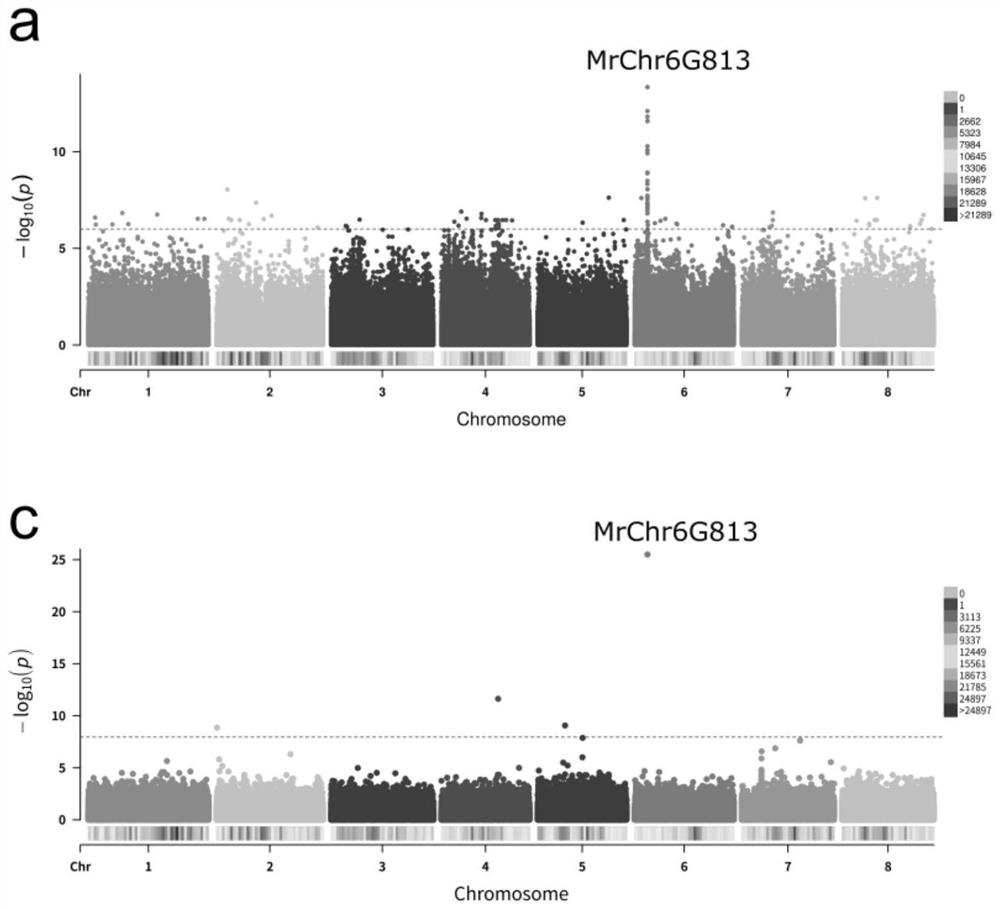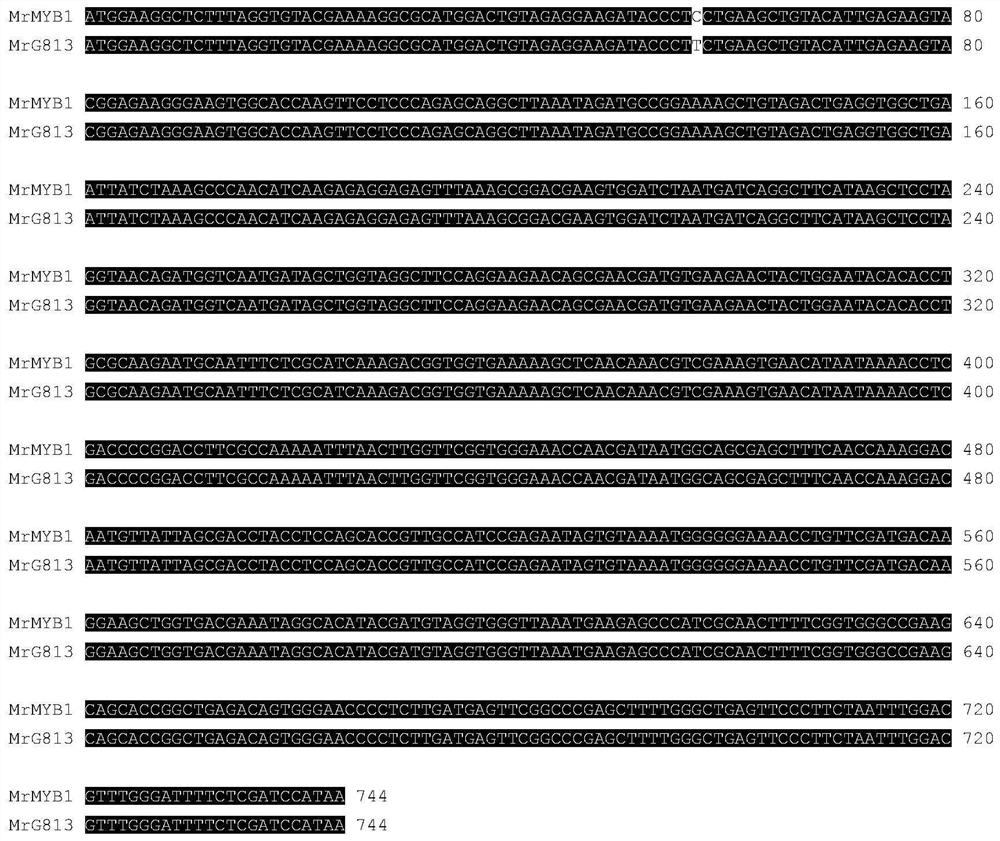KASP molecular marker for detecting red bayberry fruit color and application of KASP molecular marker
A marking and coloring technology, applied in recombinant DNA technology, microbial measurement/inspection, DNA/RNA fragments, etc., can solve the problems of inaccurately finding SNP sites, difficulty in ensuring accuracy, and inability to distinguish red plums from dark plums, etc. , to achieve the effects of reducing time and labor costs, speeding up the selection process, and improving detection efficiency
- Summary
- Abstract
- Description
- Claims
- Application Information
AI Technical Summary
Problems solved by technology
Method used
Image
Examples
Embodiment 1
[0039] Example 1 is used to detect the development of the KASP molecular marker of red bayberry fruit color
[0040] 1. Mining of red bayberry fruit color genes
[0041] Based on the previous survey of germplasm resources, the germplasm resources of bayberry production areas across the country were sorted out. A total of 173 germplasm resources were collected, genome resequencing was carried out, and the importance of fruit color of 136 germplasm resources was determined. Trait lightness (L), genome-wide association analysis was carried out between genome data and lightness, and a SNP was detected at the 4,691,249bp position of chromosome 6, and the gene located according to the SNP position was found to be MrChr6G813( figure 2 a and c), wherein a is the GWAS figure made by utilizing the TASSEL software calculation method, c is the GWAS figure made by the EMMAX software calculation method, a and c display are all associated with the SNP at the same position, as can be seen pr...
Embodiment 2
[0044] Embodiment 2 is used for the design of the primer combination of KASP detection molecular marker
[0045] In this embodiment, according to the SNP site obtained in Example 1, the upstream 50bp sequence (Seq ID NO.5) and the downstream 50bp sequence (Seq ID NO.6) of the SNP at position 4,691,249bp on chromosome 6 were searched, and the Cereals DB website was used. The KASP primer numbered KASP-Primer-813 was designed to detect the genotypes of Myrica rubra with different fruit colors. The primer sequences are shown in Table 1, wherein the 5' end of forward primer 1 has a FAM fluorescent signal label, and the 5' end of forward primer 2 has a HEX fluorescent signal label. The primer combination sequence can specifically combine with the corresponding sequences upstream and downstream of the SNP site.
[0046] Table 1 KASP-Primer-813 primer sequence
[0047]
Embodiment 3
[0048] Example 3 Verification of KASP molecular markers
[0049] 80 bayberry germplasms with different fruit colors were used to verify the accuracy of detection rate, among which 40 germplasms were black plums, 32 were red plums, and 8 were white plums (Table 3). The DNA of 80 parts of Myrica rubra germplasm materials was extracted by CTAB method, and the KASP primer genotype detection was carried out by using the KASP-Primer-813 primer provided in Example 2.
[0050] Using 1.6 μl PCR reaction system, containing 0.8 μl KASP master mix (LGC, BiosearchTechnologie), 0.05 μl each primer (Primer_AlleleFAM, Primer_AlleleHEX, Primer_Common) and 0.8 μl DNA (5-10ng / μl), according to IntelliQube instrument (LGC, Biosearch Technologies) instructions for PCR analysis, the PCR reaction program is: 95°C pre-denaturation, 15min; 95°C denaturation for 20s; 65°C annealing and extension for 25s, each cycle of annealing temperature decreased by 1°C, a total of 10 cycles; 95°C denaturation for 1...
PUM
 Login to View More
Login to View More Abstract
Description
Claims
Application Information
 Login to View More
Login to View More - R&D
- Intellectual Property
- Life Sciences
- Materials
- Tech Scout
- Unparalleled Data Quality
- Higher Quality Content
- 60% Fewer Hallucinations
Browse by: Latest US Patents, China's latest patents, Technical Efficacy Thesaurus, Application Domain, Technology Topic, Popular Technical Reports.
© 2025 PatSnap. All rights reserved.Legal|Privacy policy|Modern Slavery Act Transparency Statement|Sitemap|About US| Contact US: help@patsnap.com



